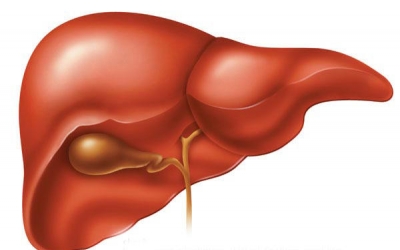- Latest news▼
-
18:00, April 18 Daily Mail: Elderly woman in China gets infected with brain-eating amoeba

-
14:19, April 18 Obesity: exercising before breakfast helps you lose weight faster

-
10:42, April 18 The Conversation: childhood trauma can cause pathological hoarding

-
08:37, April 18 Daily Mail: Satiating food reduces cravings for sweets, nutritionist says

-
18:22, April 17 First Armenian-German Conference entitled “Heart Failure Spring School”

-
08:38, April 17 Why do kids usually recover from COVID-19 more easily than adults?

-
14:37, April 16 Daily Mail: intermittent fasting is not suitable for children and women before their periods

-
16:41, April 15 Cell: in carriers of defective BRCA2 gene, sugar consumption increases cancer risk

-
15:04, April 15 305 cases of measles recorded in Armenia so far in 2024

-
14:38, April 15 Food and Environmental Virology: tea contributes to effective coronavirus control

-
12:41, April 15 Daily Mail: vitamin A, B3 and E supplements can be dangerous

-
10:56, April 15 Diabetes Care: evening physical activity is good for the heart

-
08:27, April 15 Women are more susceptible to blood loss and death during bypass surgery than men, researchers say

-
18:42, April 13 WHO: Nigeria pioneers revolutionary meningitis vaccine

-
16:43, April 13 One-third of women experience menstruation-related migraines, most often during premenopause - study

All materials
New imaging method spots liver cancer at early stage

US researchers have developed a new imaging method that can detect liver cancer and other liver diseases at an earlier stage than what current leading methods can, reports a new study.
"Liver cancers associated with high mortality rates and poor treatment responses are often diagnosed in the late stages because there is not a reliable way to detect primary liver cancer and metastasis at a size smaller than one centimetre," said lead study author Jenny Yang, professor at Georgia State University, in the US.
The new method can scan liver tumours that measure less than 0.25 millimetres, the study reported.
Magnetic resonance imaging (MRI) is the leading imaging technique to detect disease without using radiation. MRI contrast or imaging agents aid MRI techniques to obtain tissue-specific images.
However, according to the researchers the applications of MRI contrast agents are not effective for early detection of cancerous tumours because they are hampered by uncontrolled blood circulation time, low relaxation rate or sensitivity, and low specificity.
Most contrast agents, Yang said, are rapidly excreted from the liver, not allowing sufficient time to obtain quality imaging.
To more effectively detect cancerous tumors at an early stage, the researchers developed a new class of protein-based contrast agents (PRCAs) and an imaging methodology that provides robust results for the early detection of liver cancer and other liver diseases.
"Our new agents can obtain both positive and negative contrast images within one application, providing double the accuracy and confidence of locating cancerous tumors," Yang said.
The researchers have shown proof-of-concept that the new method can be used to detect cancerous liver tumours at an early stage with high sensitivity.
They have also demonstrated that these new agents better aid the imaging of multiple organs, including the kidney and blood vessels, in addition to the liver and tumours.
The findings were published in the journal Proceedings of the National Academy of Sciences.
Follow NEWS.am Medicine on Facebook and Twitter
- Video
- Event calendar
- Archive
- Most read
month
week
day
- Pediatrics: Hypoglossal nerve stimulation implant helps with sleep apnea 1351
- Health minister: Simulation educational center will be created, assisted reproductive technology capacity will increase in Armenia 1308
- WHO: Nigeria pioneers revolutionary meningitis vaccine 1161
- One-third of women experience menstruation-related migraines, most often during premenopause - study 1129
- Women are more susceptible to blood loss and death during bypass surgery than men, researchers say 866
- Daily Mail: vitamin A, B3 and E supplements can be dangerous 850
- Food and Environmental Virology: tea contributes to effective coronavirus control 850
- Cell: in carriers of defective BRCA2 gene, sugar consumption increases cancer risk 818
- 305 cases of measles recorded in Armenia so far in 2024 812
- Diabetes Care: evening physical activity is good for the heart 802
- Daily Mail: intermittent fasting is not suitable for children and women before their periods 627
- First Armenian-German Conference entitled “Heart Failure Spring School” 415
- Why do kids usually recover from COVID-19 more easily than adults? 254
- The Conversation: childhood trauma can cause pathological hoarding 236
- Obesity: exercising before breakfast helps you lose weight faster 233
- Find us on Facebook
- Poll





